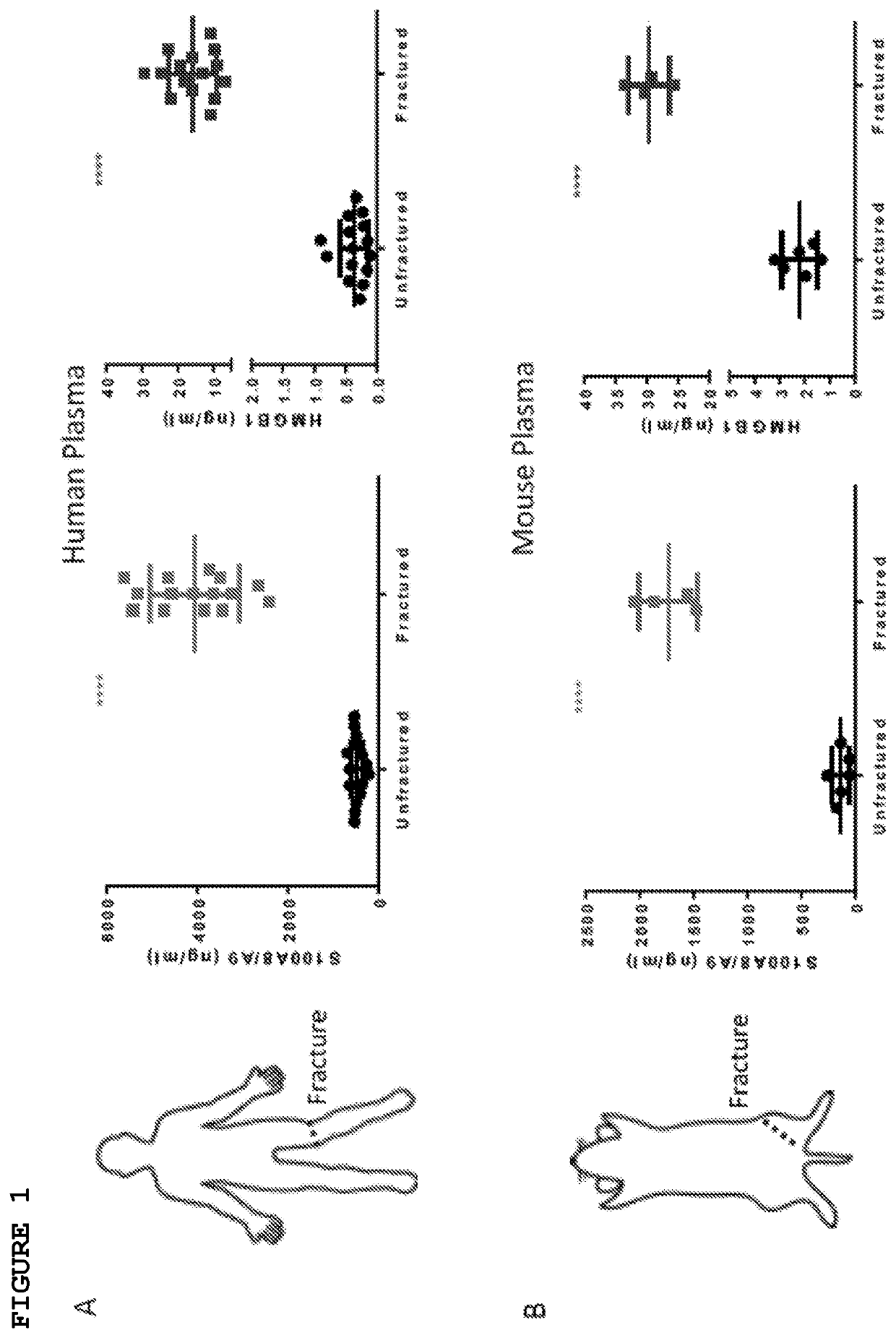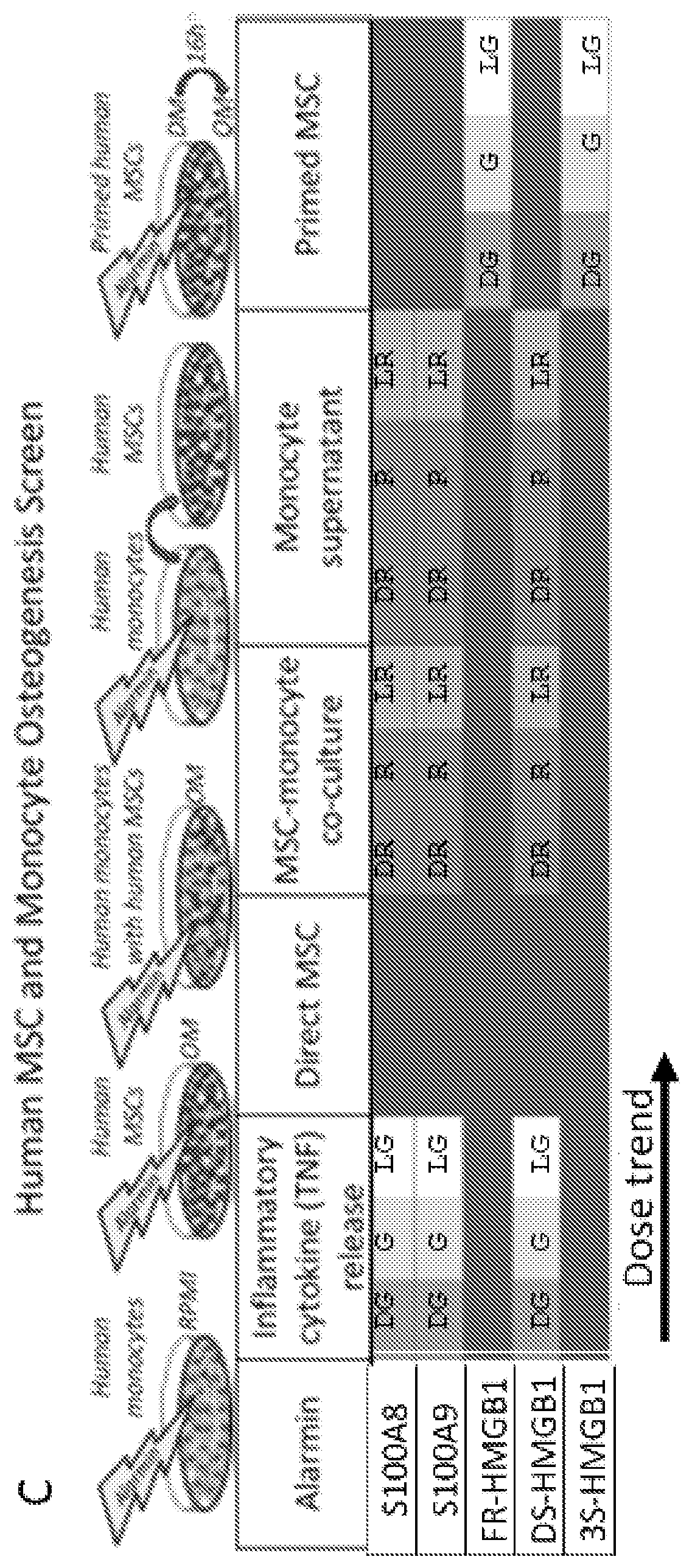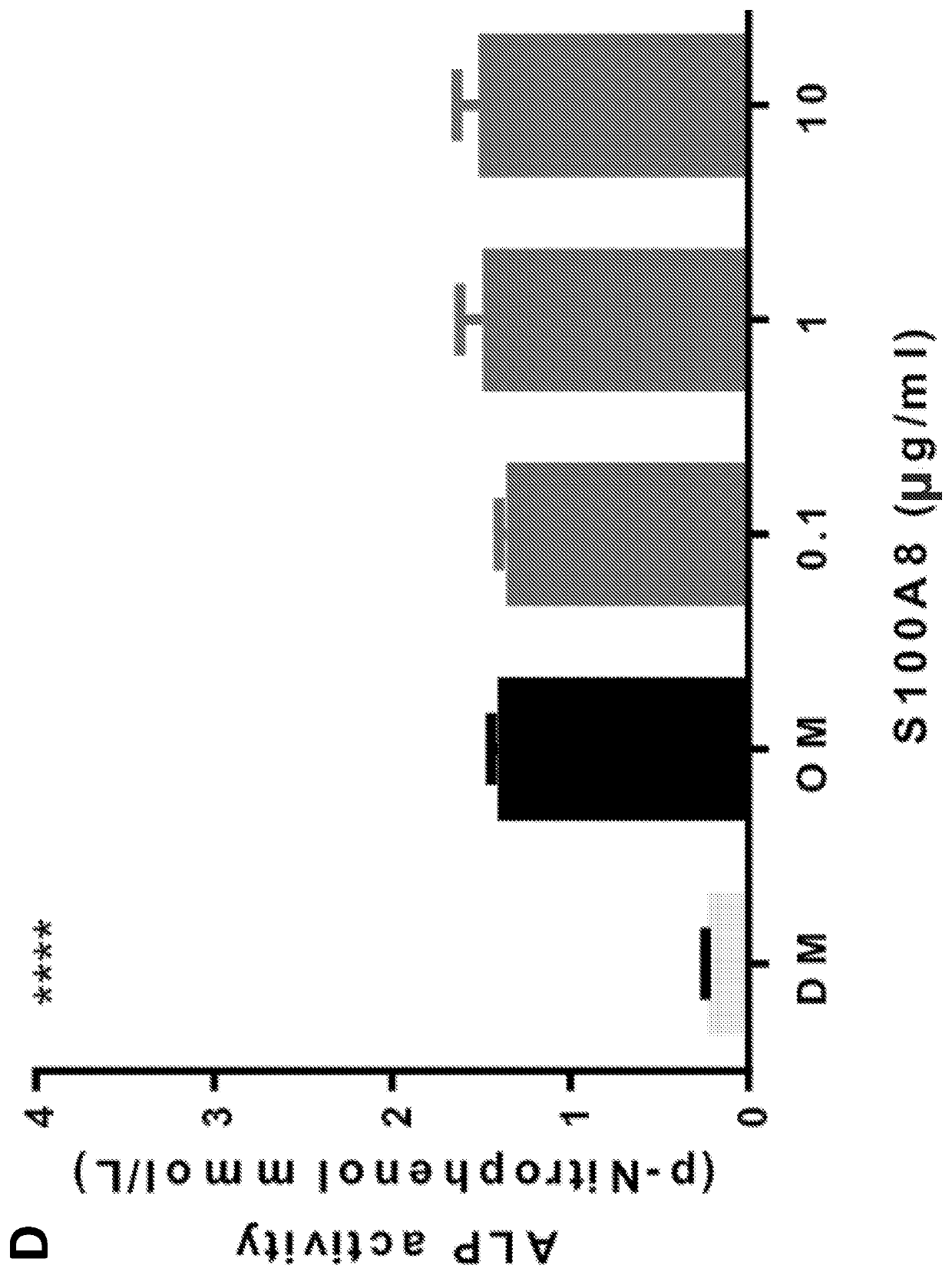Prophylactic uses of partially or fully reduced forms of hmgb1 prior to injury
a technology of hmgb1 and hmgb2, applied in the field of prop, can solve the problems of high cost of ex vivo expansion of autologous stem cells on an individual patient basis, risky lifelong immunosuppressive therapy, and failure to translate the success of animal models
- Summary
- Abstract
- Description
- Claims
- Application Information
AI Technical Summary
Benefits of technology
Problems solved by technology
Method used
Image
Examples
examples
[0045]Alarmins are a group of evolutionarily unrelated endogenous molecules with diverse homeostatic intracellular roles, which when released from dying, injured or activated cells trigger an immune / inflammatory response (Harry 2008, Glass 2011, and Chan 2015). Much effort has been focused on their deleterious role in autoimmune and inflammatory conditions (Chan 2015, Scaffidi 2002, Terrando 2010, Harris 2012, and Horiuchi 2017). Of the few studies (Chan 2012, Tirone 2018) that have investigated the role of alarmins in tissue repair, none have used a combination of human tissues and multiple animal injury models to characterize their effects on precise flow cytometry-defined endogenous adult stem cells in vivo. In the following examples, it has been demonstrated that High Mobility Group Box 1 (HMGB1) is a key upstream mediator of tissue regeneration which acts by transitioning CXCR4+ skeletal, haematopoietic and muscle stem cells from Go to GAlert. The following examples also demons...
example
Materials and Methods
[0046]The objective of this study was to understand the role of alarmins in tissue regeneration in vivo through their effects on adult stem cells, and the translational relevance of these findings. We used human samples and primary human cells and multiple murine models of injury and regeneration. For prospective multi-parameter flow cytometry assays, we used well-established skeletal, haematopoietic and muscle stem cell-surface markers, and published isolation protocols (Chan 2015, Wilson 2008, Liu 2015). Sample size (n values) are reported as biological replicates of human donors and mice. The magnitude of the effect and variability in the measurements were used to determine sample size and replication of data. The genotypes and experimental conditions of each mouse / sample were not readily known to the experimenters during sample processing and data collection. Animals were excluded from the study only if their health status was compromised.
[0047]Human and mur...
example 2
[0083]A model is developed in which a highly-conserved injury signal, HMGB1, acts via a well-established maintenance signaling pathway, CXCL12-CXCR4, to promote tissue regeneration as depicted in FIG. 4N. This pathway is targeted to accelerate healing in any tissue that relies on repair by cells that express CXCR4 and can transition to GAlert. FR-HMGB1 is administered as a single dose either locally or systemically soon after injury or even up to 2 weeks before injury to accelerate healing. Administration up to 2 weeks before injury accelerates healing. Administration up to 3 weeks before injury also accelerates healing. Additionally, administration at the time of injury or soon after injury accelerates healing.
PUM
| Property | Measurement | Unit |
|---|---|---|
| Electrical conductance | aaaaa | aaaaa |
| Electrical conductance | aaaaa | aaaaa |
| Electrical conductance | aaaaa | aaaaa |
Abstract
Description
Claims
Application Information
 Login to View More
Login to View More - R&D
- Intellectual Property
- Life Sciences
- Materials
- Tech Scout
- Unparalleled Data Quality
- Higher Quality Content
- 60% Fewer Hallucinations
Browse by: Latest US Patents, China's latest patents, Technical Efficacy Thesaurus, Application Domain, Technology Topic, Popular Technical Reports.
© 2025 PatSnap. All rights reserved.Legal|Privacy policy|Modern Slavery Act Transparency Statement|Sitemap|About US| Contact US: help@patsnap.com



